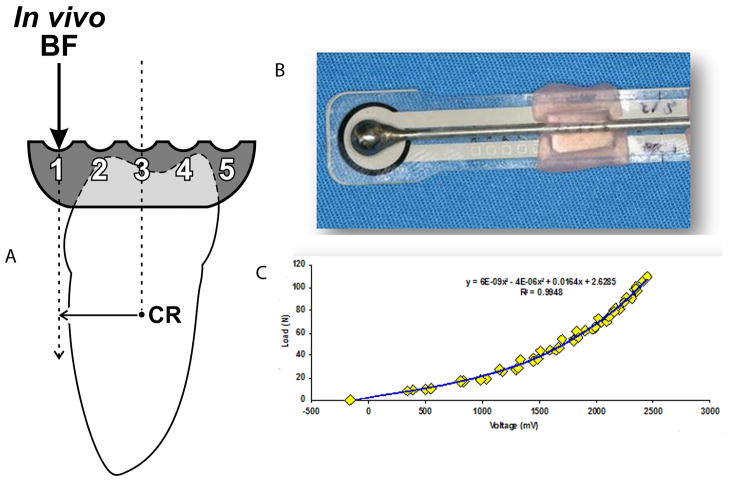Figure 1.
A. Mesial view of a right mandibular molar and custom coping (modified from Iwasaki et al. (30)). The extreme vestibular indentation is labeled #1, whereas the extreme lingual indentation is labeled #5. Bite-force (BF) is indicated by the vertical arrow. Position #3 was located over the estimated center of resistance (CR) of the tooth. Depending on the position of the bite-force, the mechanical moments generated about the CR varied in sign and magnitude.
B. Bite-force transducer from mandibular prespective. Magnitudes of the bite-forces were measured using preconditioned and calibrated sensor film (Tekscan Flexiforce; see Materials and Methods). A standardized sphere with a flattened side of approximately 4 mm diameter was centered on the loading area of the sensor film and the film was attached to the wire handle of the sphere using light-cured acrylic.
C. Calibration curve for a bite-force transducer after pre-conditioning, where known loads were applied to the sphere on the film ex vivo while simultaneously recording voltage output (mV). The relationship between loading force and voltage output was non-linear so a third-order polynomial regression was calculated for each bite-force transducer. Accuracy of the preconditioned transducer was +/− 1.5 N

